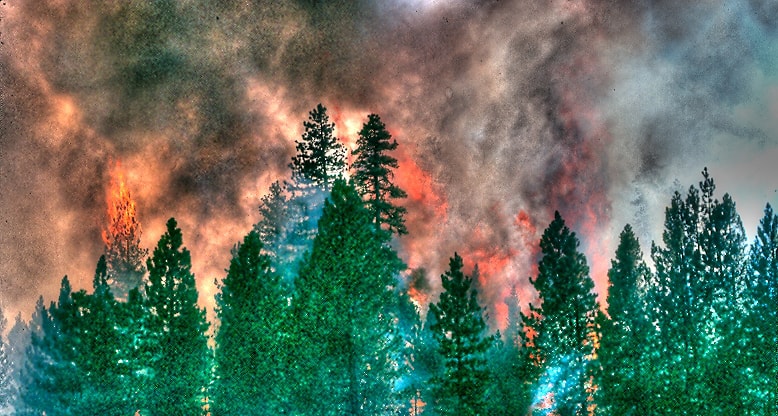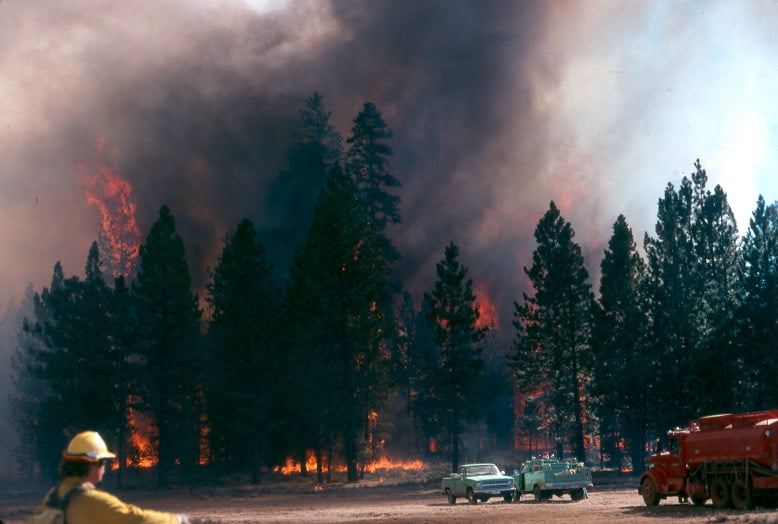(sorry this is long, I didn’t know what to pick out).
Major environmental groups are torn over a massive package of parks, wilderness and development bills that has been attached to the fiscal 2015 defense authorization bill, a bipartisan, bicameral measure that appears poised to pass Congress.
If passed, the package negotiated by leaders on the Senate Energy and Natural Resources and House Natural Resources panels would be by far the largest array of public lands measures to advance in Congress in nearly six years.
But some prominent greens say the environment got a raw deal, pointing to Republican-backed provisions to privatize public lands in Arizona and Alaska for mining and logging and to expedite permits for grazing on more than 100 million acres of public lands in the West.
And on the far right, at least one senator is preparing to do all he can to defeat the parks and wilderness provisions when the defense bill reaches the chamber floor.
“We’re not happy about how this thing unfolded,” said Athan Manuel, director of the Sierra Club’s lands protection program. “The losses far outweigh the wins.”
Manuel said he was particularly concerned with bills by Sen. John McCain (R-Ariz.) to authorize a land swap near Superior, Ariz., to facilitate development of Rio Tinto PLC’s Resolution Copper project and by Sen. Lisa Murkowski (R-Alaska) to convey roughly 70,000 acres of the Tongass National Forest to the Juneau, Alaska-based Sealaska Corp., mostly for logging.
“We should not be privatizing federal lands at the behest of a mining company,” Manuel said. “We should not be privatizing public lands that are sacred to Native Americans.”
Multiple green groups also expressed grave concerns with language by Sen. John Barrasso (R-Wyo.) to expedite grazing permits, a provision they warned could undermine the Bureau of Land Management’s ability to save the greater sage grouse from an Endangered Species Act listing.
Manuel said the Sierra Club would be reaching out to allies on the Armed Services panels and the House Rules Committee to see whether certain provisions can be removed from the bill, but he said changes at this late stage are unlikely.
Congress is under a tight time frame to pass the National Defense Authorization Act (NDAA) — considered a must-pass bill — and Senate Armed Services leaders on both sides of the aisle are urging colleagues to vote on the package without amendments.
The Rules panel is set to meet at 3 p.m. today to discuss the bill, and a House vote could occur by week’s end.
Green groups were under no illusion that a public lands package would be free of what they view as “poison pills.” The 2009 Omnibus Public Land Management Act, for example, contained a provision by Murkowski allowing the possible construction of a road through an Alaska wilderness area to improve public safety for a predominantly Native Alaskan town.
Wilderness Society President Jamie Williams today blasted the inclusion of “destructive provisions” in NDAA such as Resolution Copper, but said “other aspects of this legislation will secure significant conservation gains and should be passed without delay.”
“The Wilderness Society is pleased to see Congress poised to act on a number of bipartisan wilderness and public lands bills that have awaited passage for years,” he said. “These measures protect invaluable drinking water sources; wildlife habitat; and places to hunt, camp and experience our great outdoors while strengthening local economies and enhancing the quality of life for countless Americans.”
Pew Charitable Trusts Director of U.S. Public Lands Tim Mahoney said the package is a good deal for conservation and should be passed.
“We support this,” he said this morning, noting that the wilderness provisions support locally crafted compromises to preserve the public estate. “That doesn’t mean we’re exceedingly comfortable with everything in it.”
But others including Andy Kerr, an environmental lobbyist who splits his time between Washington, D.C., and Oregon, said pro-environment lawmakers sold out.
“I can be bought, but I’m not cheap,” he said, saying he’s made past sacrifices to achieve conservation gains.
Kerr said he’s pleased to see the package includes roughly 250,000 acres of new wilderness designations in a handful of Western states, but he said many, if not most, of those lands do not face imminent threats. There were other wilderness bills left on the table, he said, including at least four in Oregon.
“Just putting some acres on the scoreboard at the cost of other lands is not a good way to behave,” he said.
Kerr was particularly opposed to the grazing permit language, which he said has changed significantly from a bill by Barrasso, S. 258, that passed ENR with bipartisan support a year ago. “The language was pounded together in a back room,” he said, warning that, with passage, the listing of sage grouse will be “inevitable.”
The grazing language was strongly supported by the National Cattlemen’s Beef Association (NCBA) and the Public Lands Council (PLC), both of which backed the underlying package.
“Sen. Barrasso and Rep. [Raúl] Labrador [R-Idaho] have led the effort to bring security to federal land grazing rights and provide needed efficiencies to the land management agencies — the included provisions would do just that,” said Dustin Van Liew, executive director of PLC and NCBA for federal lands. “The energy and natural resource committees of both chambers should be commended for working to find agreement and relative balance in the lands package included in the NDAA, primarily including only legislation that has had bipartisan support and committee hearings this session.”
Bobby McEnaney, who oversees public lands and wildlife protections for the Natural Resources Defense Council, called the lands package “a mixed bag” but said he has “pretty big concerns” with how the grazing provisions affect the National Environmental Policy Act, which mandates transparency in public lands decisions.
Those concerns are shared by Defenders of Wildlife, said the group’s legislative counsel, Sandra Purohit. “They may come back to be problematic for whichever side of sage grouse you’re fighting on,” she said.
Neither NRDC nor Defenders has taken a position yet on the overall package. The National Parks Conservation Association will be supporting it, a top official there said.
Support from lawmakers
In Congress, support for the lands package appears strong, and some who oppose it do not appear geared up for a fight. There’s enormous bipartisan pressure to pass NDAA, which has occurred annually for more than 50 years.
“The process [for passing the lands bills] is wrong, and I’ll say so on the floor,” said Sen. James Inhofe (R-Okla.), ranking member of Armed Services. But “unfortunately, when you come into very complicated legislation, you have to have some things you don’t want, some things you do want. We have to have a defense authorization bill. That’s the must. There will be some things I don’t like.”
Inhofe predicted the bill would pass.
An email to the office of Sen. Tom Coburn (R-Okla.), a top critic of parks and wilderness packages, was not returned this morning. But Roll Call reported this morning that Coburn on Nov. 19 sent a letter to Minority Leader Mitch McConnell (R-Ky.) saying he intends “to utilize all procedural options at my disposal as a United States Senator, including objecting to any unanimous consent agreements or time limitations, if NDAA contains extraneous public lands provisions such as authorizing new National Park units, expanding wilderness areas, creating new National Heritage Areas, or expanding the federal land base.”
Sen. Barbara Boxer (D-Calif.) this morning said she had not seen the contents of the lands package but expects she will support it.
Sen. Maria Cantwell (D-Wash.) likewise said she plans to support the package.
“There are definitely things in there that I don’t support individually, but I think everything has been worked through the process,” she said.
The leaders of the energy and natural resources panels in both chambers this morning issued statements touting the lands package’s balance between conservation and development.
“The agreement offers a balanced approach to public lands management, providing opportunities for new job creation and energy and mineral production, while simultaneously protecting special areas,” said House Natural Resources Chairman Doc Hastings (R-Wash.), who had a bill of his own to designate a Manhattan Project national historic park in Washington, Tennessee and New Mexico included in NDAA.
Murkowski, the top Republican on the Senate Energy and Natural Resources Committee, said the package will benefit Alaska.
“This package includes important provisions that will boost communities throughout our state, including the settlement and finalization of lands issues in southeast Alaska, the conveyances of land for community development in Anchorage, and at Fort Wainwright,” Murkowski said.
The package also carries strong support from the Montana delegation, New Mexico’s Democratic senators and lawmakers on both sides of the aisle in Colorado.
Kathleen Sgamma, vice president for government and public affairs at the Denver-based Western Energy Alliance, an oil and gas trade group, said she was happy to see the package include a bipartisan measure to extend and expand a Bureau of Land Management oil and gas permit streamlining program.
“The bill will ensure that funding for basic permitting continues into the future while providing some regulatory certainty for federal onshore energy development,” she said.
Major provisions of the package would:
Convey 110,000 acres out of federal ownership for economic development including mineral production, logging, infrastructure and community developments including a cemetery and shooting range.
Enhance private funding for national parks through donor recognition; issue a commemorative coin to recognize the 100th anniversary of the National Park Service in 2016; and designate “a select number of new park units that have strong local support.”
Designate roughly 245,000 acres of wilderness, nearly half of which is already managed as such due to roadless or wilderness study area status.
Release 26,000 acres of current wilderness study areas to multiple use.
Permanently protect the American side of the North Fork of the Flathead River Watershed in Montana by barring future mining or drilling on 430,000 acres.



